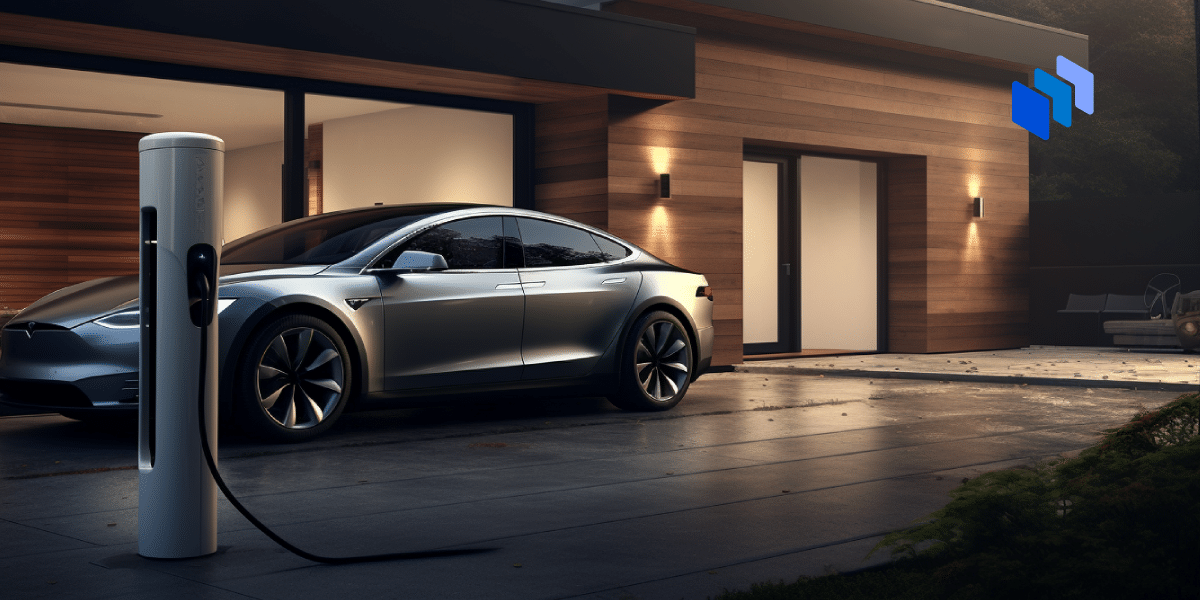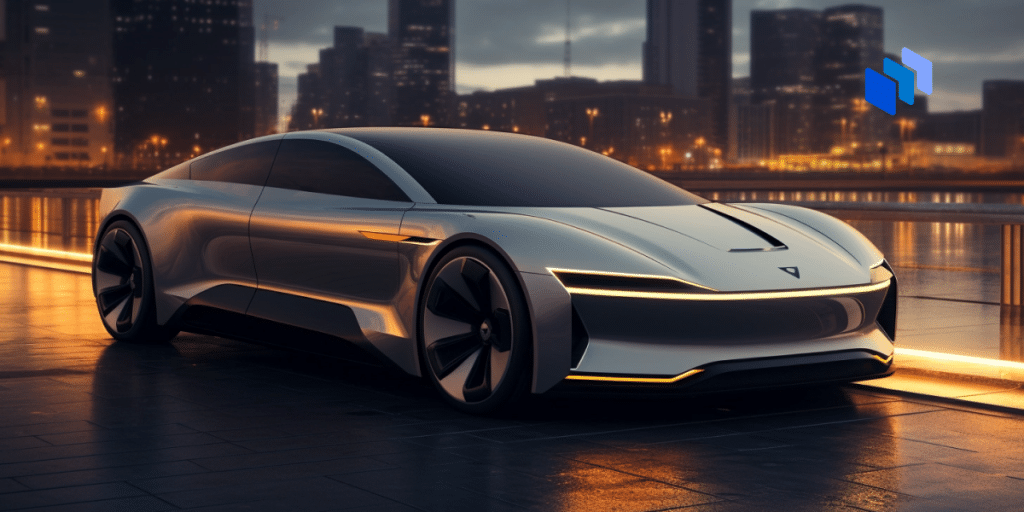Electric vehicles (EVs) are changing transportation systems worldwide, but they also require re-thinking how the electricity supply operates.
Bi-directional charging capabilities allow drivers to draw power from the electrical grid to charge their vehicles and act as mobile power sources that can send electricity back to the distribution grid and even power homes.
It might sound like quite a bizarre image, but this shift can reshape our energy management approach and create a more sustainable and resilient power system.
Most car manufacturers take it very seriously, and when you dig into why, you may see just how many efficiencies it can bring to the world.
How Does Bi-Directional Charging Work?
To discharge power to a home or back to the grid, an EV requires a bi-directional charger. While the initial versions of battery EV (BEV) chargers were one-way, drawing power from the grid to charge the vehicle, two-way chargers allow electricity to flow in both directions.
EV batteries charge from direct current (DC) power, so alternating (AC) current from the power grid is converted to DC either by a converter in the charging point or a converter inside the vehicle. To send power in the other direction, the DC power in the battery must be converted back to AC to be used by the grid.
This creates new possibilities to incorporate EVs into smart homes and smart grid management using vehicle-to-home (V2H) or vehicle-to-grid (V2G) technology. Internet-connected vehicles, chargers, and meters can control when and how electricity is supplied to and drawn from the battery. For this reason, efforts to bring bi-directional EV charging to homes are gathering pace.
EV and Power Companies Make Two-Way Charging Push
Not all EVs have the onboard converters needed to support bi-directional charging.
Ford’s F-150 Lightning pickup truck, the Nissan Leaf, and Rivian R1T and R1S models have the hardware to support V2H charging. Tesla has said it plans to provide bi-directional charging for its vehicles by 2025, while General Motors (GM) is offering V2H charging for its Chevy Silverado model and aims to expand the technology to its full line of vehicles using its Ultium EV platform line by 2026.
Central and northern Californian utility Pacific Gas and Electric Company (PG&E) has approved the F-150 Lightning paired with Ford’s Intelligent Backup Power system as the first model to participate in its residential Vehicle-to-Everything (V2X) pilot, which customers can enroll in now.
The first phase 1 of the V2X Residential pilot will use two-way charging to test backup power applications, such as using the F-150 Lightning to power a home during a power outage. Subsequent phases of the pilot will include applications such as using the truck to offset grid power use during periods of peak power demand.
In Southern California, utility San Diego Gas & Electric SDG&E works with Toyota Motor North America on V2G research using a Toyota bZ4X vehicle and Fermata Energy’s bi-directional charger and V2G platform.
The collaboration between SDG&E and Toyota’s Electric Vehicle Charging Solutions (EVCS) team is focused on finding synergies between the needs of EV owners and the electricity grid and exploring how to communicate the potential benefits of bi-directional capabilities to EV owners.
“We are embracing the concept of an entire electrified ecosystem for our customers, and the ability for vehicles to integrate with the grid is an essential component of this ecosystem,” said Christopher Yang, group vice president at Toyota EV Charging Solutions.
“Toyota seeks to empower utilities to better anticipate and leverage the significant number of plug-in hybrid and BEVs on their grids, both as a growing source of energy demand and, in the future, energy supply.”
Recognizing the potential for bi-directional charging capabilities, Swedish automaker Volvo has launched a new Energy Solutions business unit to develop energy storage and charging-related technologies.
Volvo’s EX90 electric SUV, scheduled to launch in 2024, will be the company’s first EV with bi-directional hardware and support for future software to enable two-way charging and direct energy storage from solar.
Pilots Begin in Major Cities
Volvo is working with Göteborg Energi Nät, the local power grid operator in the Swedish city of Gothenburg, to launch a V2G pilot program.
The pilot uses a low-cost AC wall box charger to help accelerate the widespread adoption of the technology among consumers.
Volvo estimates that with its aim to have a fully electric fleet by 2030, it will have a total battery capacity of around 50GWh by mid-decade. While these vehicles will use several terawatt hours (TWh) of electricity each year, smart charging will ensure flexible energy consumption.
Additionally, data from the Volvo fleet shows that the average daily drive in Europe uses less than 10 kilowatt hours (kWh), while 90% of all daily drives use less than 20kWh. This means there is ample spare battery capacity available that EV owners can use.
“The idea with building an energy ecosystem around your car and the batteries is that it allows you to save money and reduce your CO2 emissions, while energy firms benefit from reduced grid investments and a lower overall impact on the environment,” said Alexander Petrofski, head of Volvo’s new Energy Solutions business.
Beyond the V2G pilot, Volvo is looking at V2H products and vehicle-to-load (V2L) services, which would allow EV drivers not only to power their homes but also charge other items such as electric bicycles or camping gear.
Several automakers offer V2L charging with an adaptor, including Hyundai, Kia, Genesis, and Mitsubishi.
In the UK, Volvo is working with utility firm OVO and energy software company Kaluza to develop managed bi-directional charging services starting in 2024. OVO and Kaluza introduced their V2G program in 2018. “V2X is one of the most exciting developments from the transition to electric vehicles. We know that the only way to achieve net zero is to create a smart energy system, and flexibility will play a critical role in making that happen,” according to Alex Thwaites, Director of EV at OVO.
3 Benefits of Bi-directional Chargers
- Make money by selling excess energy back to the grid
- Save money by leveraging differential energy tariffs
- Becoming energy self-sufficient by connecting onsite renewables
What Will Drive Two-Way Charging Adoption?
At this stage, bi-directional charging requires specific EV models and chargers. What will encourage EV manufacturers, power firms, and drivers to make the switch?
“Understanding the needs of BEV owners, their charging habits, and when they use their vehicles will be crucial in driving widespread adoption of V2G,” according to Toyota.
“Nearly 80 percent of owners currently charge their BEVs at home overnight, when grid demand is lower. With bidirectional capability, these vehicles could send power back to the grid during peak demand hours or at other critical times, such as during rotating outages due to shortage in electricity supplies.”
The ability to supply homes with power during grid outages is one of the key advantages of bidirectional charging, particularly in parts of the world where power supply can be unstable. When the power grid fails, EVs equipped with V2H capabilities can reduce the impact of blackouts and ensure that essential appliances and devices continue to operate.
Additionally, EV owners can save money on their electricity bills and earn income from selling their battery power back to the grid. For instance, OVO and Kaluza’s V2G program has saved drivers an average of £420 and up to £800 annually on their household electricity costs.
There are incentives for grid operators and utilities to support bi-directional charging, as it allows EVs to support grid stability. During peak demand periods, such as hot days when air conditioners run at full capacity, charged EV batteries can supply electricity to the grid.
This helps stabilize the grid and reduces the need for additional transmission and distribution lines or power plants as demand increases and aging infrastructure is decommissioned, contributing to a more efficient and sustainable power system.
Using EVs as mobile battery storage units can also support the integration of intermittent solar and wind power generation into the grid. They can store excess electricity generated during periods of high renewable output and release it when output is low and/or demand is high, preventing energy losses and filling supply gaps.
Challenges of Bi-Directional Charging
While the concept of two-way EV charging offers the potential to support smart energy systems, there are challenges to reaching widespread adoption.
Standardization: Different vehicle and equipment manufacturers and charging infrastructure providers may use varying standards for bi-directional charging, limiting interoperability. Consistent standards will be needed to ensure that EVs from different manufacturers can communicate effectively with charging stations and the electricity grid.
Smart grid infrastructure: Integrating two-way electricity flows into the grid is necessary. This will require advanced energy management systems that seamlessly coordinate between EVs, charging stations, and the grid.
Battery technology: Consistent bi-directional charging capabilities rely heavily on EV battery technology, as the batteries need to support efficient energy storage and more frequent charge-discharge cycles than simply charging and driving a vehicle requires.
Cybersecurity: As EVs become more connected with the Internet, smart home devices, and the energy grid, the risk of cyber attacks increases. Ensuring the security of the communication between vehicles, charging stations, and the grid is crucial to safeguard against potential threats that could compromise the integrity of the energy system.
READ MORE: Cybersecurity attacks over Thanksgiving show Infrastructure Risks
The Bottom Line
Electric vehicle technology is advancing, and new charging equipment and services are emerging that allow drivers to send power from their vehicle batteries to their homes and the electricity grid.
As the pilot projects getting underway demonstrate, collaboration between automakers, energy utilities, and technology providers is essential to establish a seamless and secure bi-directional charging ecosystem.
Clear and accessible information for consumers about the capabilities, limitations, and potential savings associated with bi-directional charging will be key to encouraging widespread adoption.









